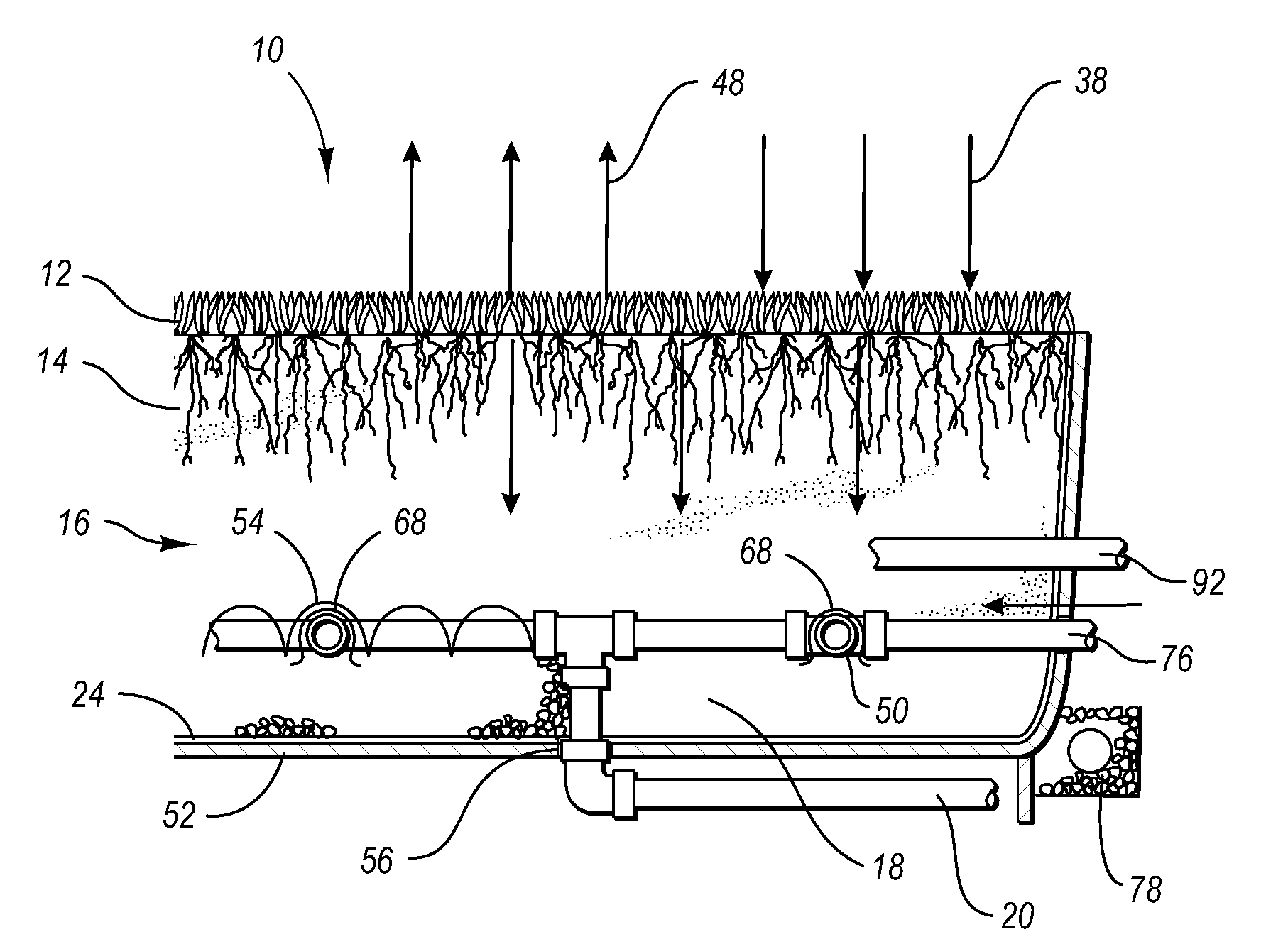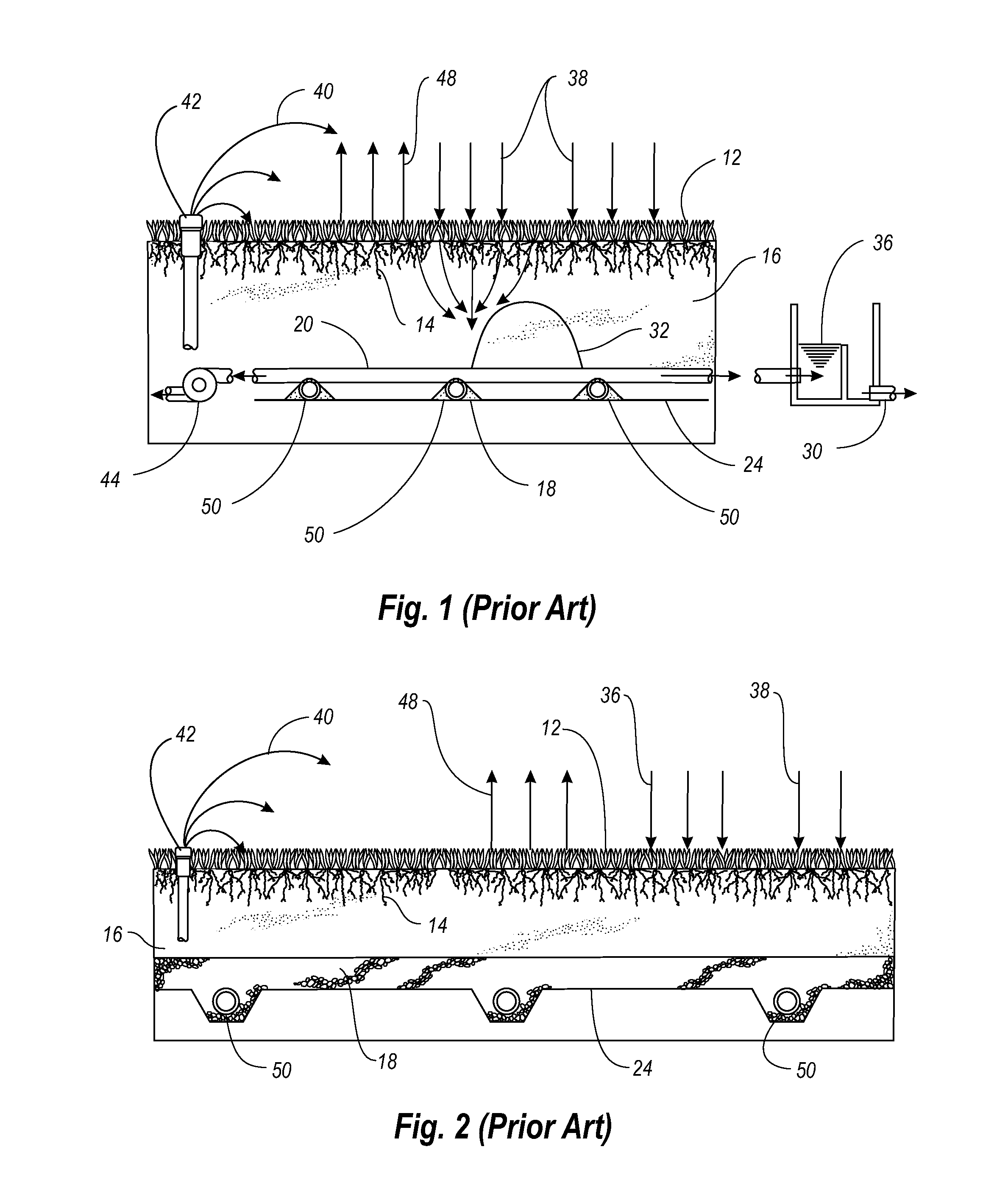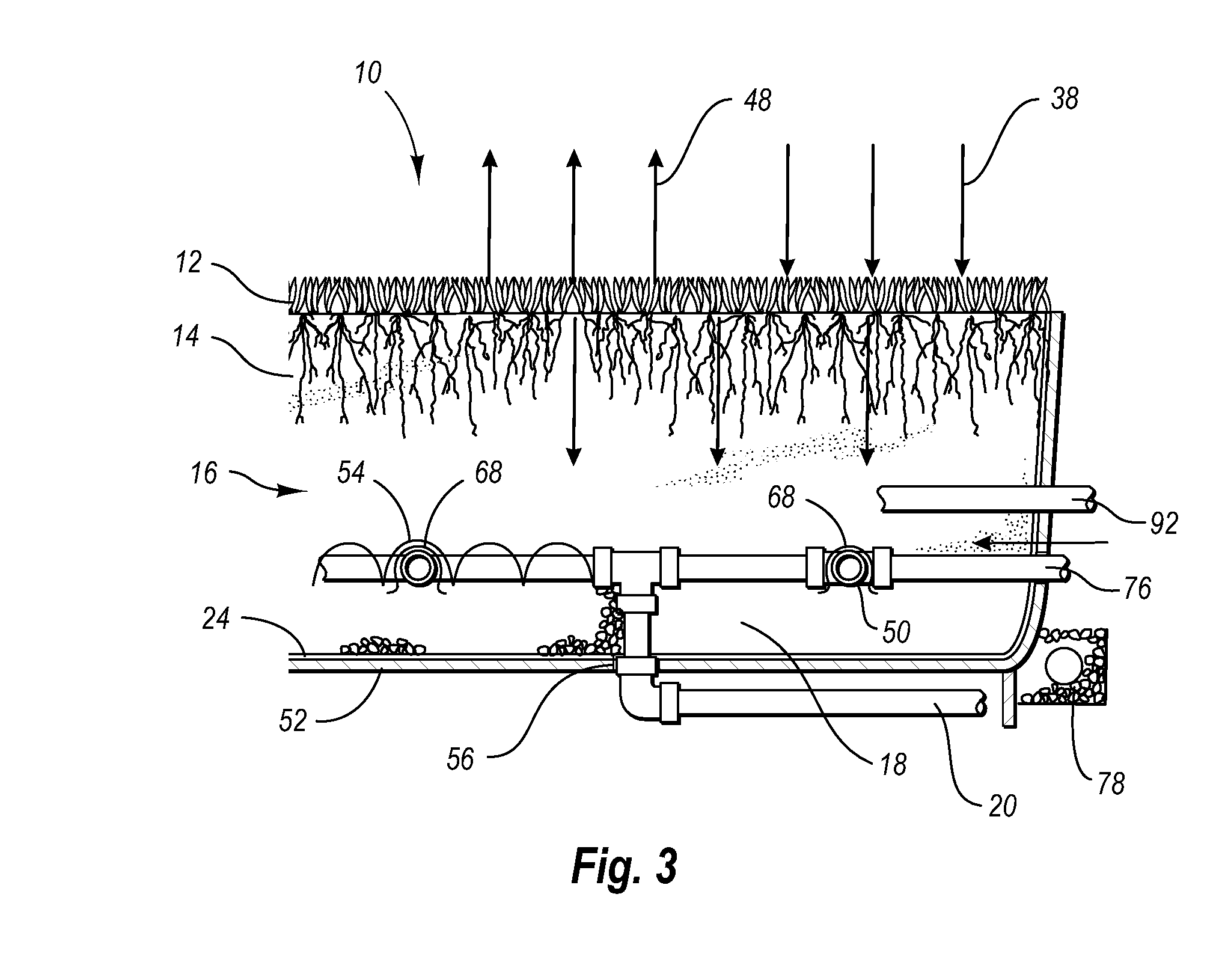Sport playing field
a technology for playing fields and turf fields, applied in the direction of seeding, root treatment, application, etc., can solve the problems of high maintenance cost of traditional natural grass fields, easy damage to athletes, and lack of durable anchors on the playing surface, etc., to prolong the usability of the grass-playing surface, increase the evaporation rate, and increase the effect of energy efficiency
- Summary
- Abstract
- Description
- Claims
- Application Information
AI Technical Summary
Benefits of technology
Problems solved by technology
Method used
Image
Examples
Embodiment Construction
[0054]While the invention is susceptible of various modifications and alternative constructions, certain illustrated embodiments thereof have been shown in the drawings and will be described below in detail. It should be understood, however, that there is no intention to limit the invention to the specific form disclosed, but, on the contrary, the invention is to cover all modifications, alternative constructions, and equivalents falling within the spirit and scope of the invention as defined in the claims.
[0055]FIG. 1 is an example of a prior art playing field established with soil and turf and subsurface drainage. The grass 12 is shown growing at the surface level in soil that has become compacted and the roots 14 are shallow. The shallow roots result in the grass quickly showing the effects of heat and damage by sports activity, and makes the grass slow to heal. Irrigation water 40 is applied to the surface by a sprinkler 42, which impairs the quality of the playing surface. When...
PUM
 Login to View More
Login to View More Abstract
Description
Claims
Application Information
 Login to View More
Login to View More - Generate Ideas
- Intellectual Property
- Life Sciences
- Materials
- Tech Scout
- Unparalleled Data Quality
- Higher Quality Content
- 60% Fewer Hallucinations
Browse by: Latest US Patents, China's latest patents, Technical Efficacy Thesaurus, Application Domain, Technology Topic, Popular Technical Reports.
© 2025 PatSnap. All rights reserved.Legal|Privacy policy|Modern Slavery Act Transparency Statement|Sitemap|About US| Contact US: help@patsnap.com



